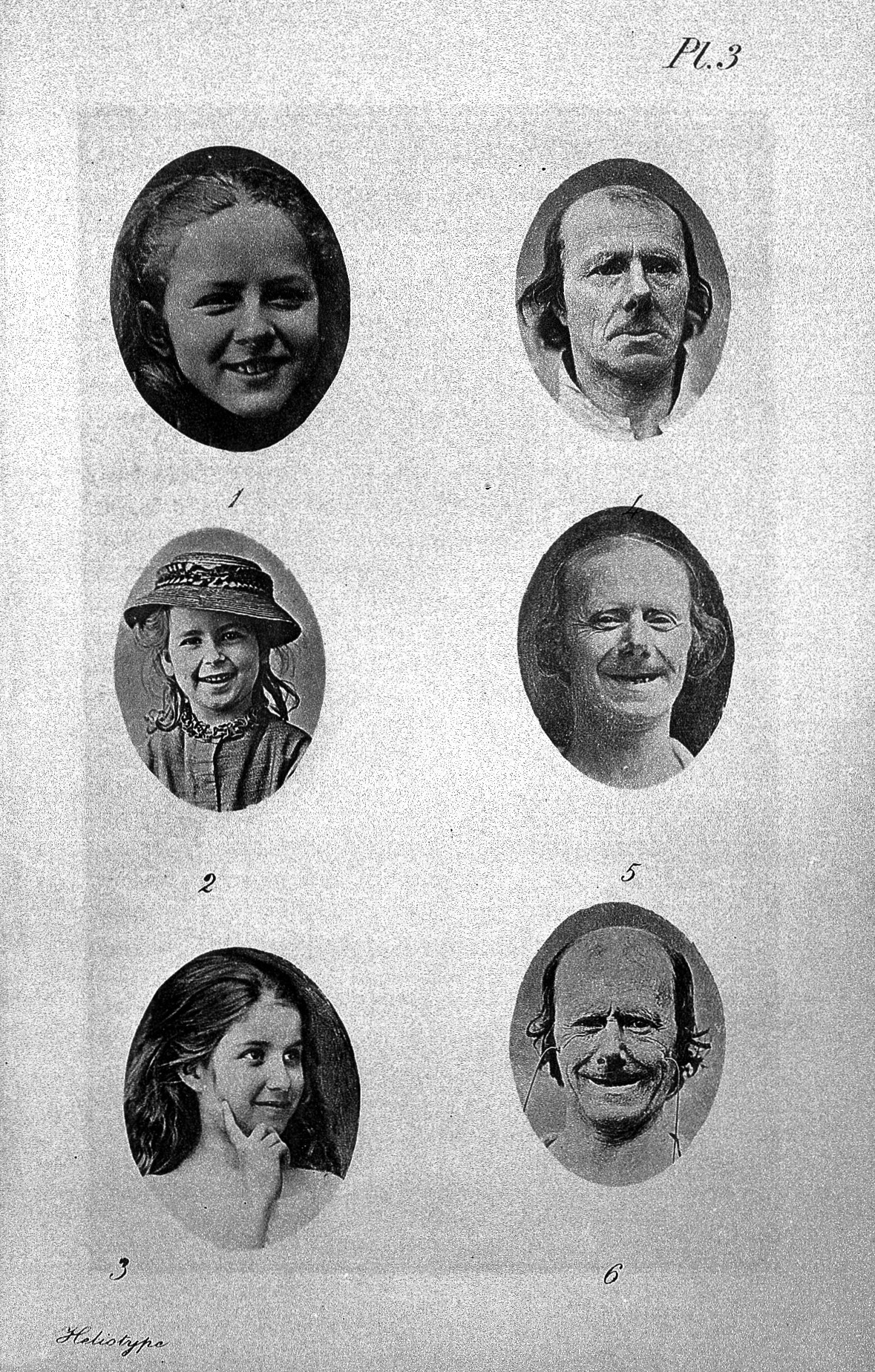In their quest to prove the interconnectedness of species, Victorian students of evolution viewed people with learning disabilities as proof of a human–animal continuum. Surprisingly, these ideas persist in some branches of moral philosophy today.
How did the minds of humans and other animals evolve from nothingness to consciousness? After Charles Darwin published his theory of evolution in 1859, scientists turned to the animal kingdom in their quest for answers. Somewhere in the evolutionary journey between the simplest single-cell organism and the higher primates, conscious thought must have emerged. But precisely at what point, and how did it come into being?
Our knees jerking when tapped is a reflex action. Comparative psychologists in the 19th century believed that ‘idiots’ were more reflexive and instinctive, and could be studied to help explain human evolution.
A new discipline of animal (or comparative) psychology was formed, which sought answers to the consciousness question by studying animal minds, from the most complex mammals to the lowest insects. Comparisons with the minds of human children and adults would, it was thought, throw light on the subject.
This intellectual endeavour was bad news for a certain type of human: those designated as ‘idiots’ at the time, broadly those we would categorise as having learning disabilities today. As the ‘lowest’ form of human mind, these people were compared – always unfavourably – with non-human animals.
Reflex, instinct and conscious action
A broad consensus was formed that consciousness evolved through a process that moved from reflex to instinct and then, in higher forms of life, conscious intentional action.
Reflex was the unthinking reaction of an organism to an external stimulus: for example, when our leg jerks upwards when our knee is tapped.
Instinct was a step up from reflex in the sense that whole species ‘learned’ reactions to stimuli – an eye closing when something comes too close – which were then acquired through adaptive evolution by future generations. Importantly, in this theory, instinct contained a limited amount of conscious action.
Full conscious action arose when individuals within a species learned to adapt their instinctive reactions to stimuli and situations they, or their forbears, had not encountered before. ‘Idiots’, regarded as the most reflexive and instinctive, and therefore least conscious of human beings, seemed an ideal object of study to demonstrate this theory.
The innate behaviour of ‘idiots’
Darwin himself had used the ‘idiot’ to demonstrate the evolutionary similarities of animals and humans in two books he wrote after ‘On the Origin of Species’: ‘The Descent of Man’ (1871) and ‘The Expression of the Emotions in Man and Animals’ (1872).
In ‘Expression of the Emotions’ Darwin gave the example of joy and high spirits, which he saw as instinctive reactions across species to pleasurable feelings. “Idiots,” he claimed, “frequently laugh in a quite senseless manner” and would “grin, chuckle or giggle” when food was placed in front of them, or if they were caressed.
He argued that such reactions were nothing to do with ‘distinct ideas’ but were just instinctive expressions of pleasure. His theory was that joy or pleasure in the so-called ‘idiot’ was a bodily reaction to an external stimulation of the senses, like the way we cannot stop ourselves laughing when tickled.

Darwin considered joy an instinctive reaction that was easily aroused in ‘idiots’.
Darwin pointed out that the anthropoid apes (such as gorillas, chimpanzees and orangutans) were similar, and “utter a reiterated sound corresponding with our laughter when they are tickled, especially under the armpits”. (We should surely take our hats off to whichever Victorian gentleman of science first decided to tickle an anthropoid ape under the armpits!)
In ‘The Descent of Man’ Darwin made further ‘idiot’/animal comparisons when he claimed that ‘idiots’ were remarkably hairy, lacked speech, ascended stairs on all fours, climbed trees, smelled their food before eating it and made grimaces. He compared ‘idiots’ who were “continually gambolling about” with lambs, who “delight to frisk on any hillock”.

Darwin compared ‘idiots’ to apes. Often, those satirising Darwin's ideas on evolution compared him to an ape in order to imply that he was idiotic.
Darwin hands on the baton
Towards the end of his life Darwin passed his uncompleted notes and manuscripts on instinct to a young protégé, George Romanes (1848–94). Romanes went on to write two volumes regarded as foundational texts for the discipline of animal or comparative psychology: ‘Mental Evolution in Animals’ (1883) and ‘Mental Evolution in Man’ (1888).
Romanes, a passionate Darwinian, was very keen to use ‘idiots’ to prove the evolutionary theory of mind. He claimed to have observed “primary instincts at work in startling ways in idiots” and described them as:
A class of persons… of peculiar interest in relation to mental evolution, because in them we have a human mind arrested in its development as well as deflected in its growth… supplying to the comparative psychologist very suggestive material to study.
He described visits to “idiot asylums” where he saw people carrying out “meaningless tricks of manner”, such as rocking, rhythmical movements and habitual gestures. He claimed that these were derived from hereditary instincts, which were once necessary but had outlived their use, and compared them to similar actions in dogs, cats and horses. Dogs turn around several times before lying down, he suggested, in an instinctive echo of their ancestors who lived in long grass and needed to trample it down before sitting.

Romanes believed that “useless” hereditary instincts characterised the behaviour of those people in the “idiot asylums” he visited.
Mind the consciousness gap
The use of idiots as ‘proof’ of the evolutionary development of mind by Romanes and subsequent comparative psychologists was extremely strategic. Their job was to explain the evolution of consciousness and the interconnectedness of species, both of which involved closing the consciousness gap between the human animal and other animal species.
If they could identify a type of ‘unevolved’ human whose combination of reflex, instinct and consciousness was close to non-humans, this could be presented as significant proof of the common descent of human and animal. The higher the levels of consciousness they could claim for some animals, and the more they could reduce the levels in some humans, the more the cross-species consciousness gap could be narrowed.
The IQ test is born
By the 1890s and early 1900s, the new concept of IQ (intelligence quotient) was being developed by psychologists in France and the United States. This suggested that a scientifically precise level of intelligence could be identified in any human, anywhere, through the application of a simple aptitude test. From this came the concept of ‘mental age’, which compared the mental functioning of a person to their chronological age.
Psychologists now considered themselves able to demonstrate ‘scientific’ proof of the comparative mental functioning of human infants, adult human ‘idiots’ and higher-functioning animals – particularly primates – through aptitude tests.
To this day psychology textbooks talk about the low ‘mental age’ of people with learning disabilities. Often the same age (usually somewhere between four and six) is attributed to primates who have taken similar tests, aimed at demonstrating their human-like capacities and consciousness.

Psychologists such as Edward Thorndike studied animals as well as humans in order to try to understand and measure intelligence.
The fallacy of the ‘bad’ human
The comparative study of animal and ‘idiot’ minds gave rise to new ways of thinking about the mentally incapacitated human that persist in contemporary society. A whole genre pervades our bookshops today, making claims about the abilities and consciousness levels of apes, monkeys, dogs, cats, birds, cows and even fish, which seek to narrow the consciousness gap between animals and humans.
Some philosophers, such as Peter Singer (author of ‘Animal Liberation’, 1975), claim that some non-human animals should enjoy greater rights than humans with learning disabilities.
The origins of these ideas lie in the work of Darwin’s disciple George Romanes and other late-19th-century animal psychologists. The Wellcome Library archives hold a superb collection of these works, which show how early animal psychology gave rise to a mode of thought about ‘good animals’ versus ‘bad humans’ that is very much with us today.
About the contributors
Simon Jarrett
Simon Jarrett is a Wellcome Trust Research Fellow at Birkbeck University of London. He writes about the history of intellectual disability, human capacity and intelligence.


